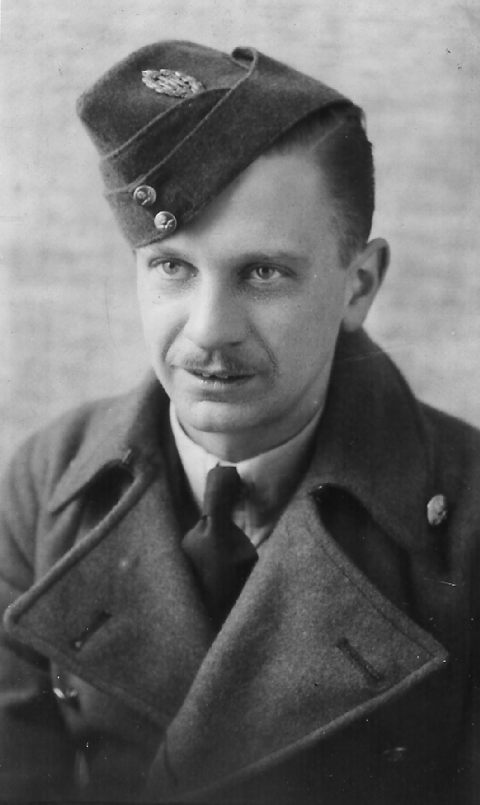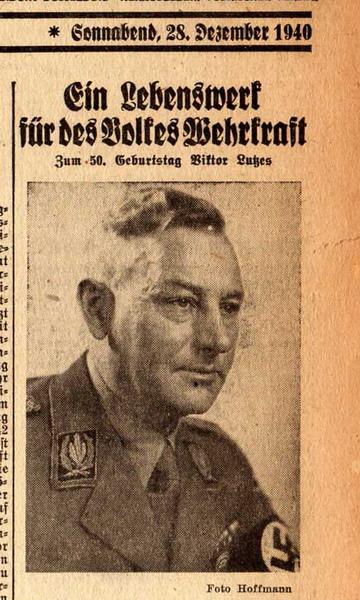Saturday 28 December 1940
Greek commander-in-chief, Alexandros Papagos decides to call a halt to the Greek offensive. The Greek advance has been sputtering for some time, given the twin difficulties of winter weather and firmer Italian resistance, and the Italians have been reinforcing their troops in Albania. This order will take effect on 6 January 1941, but in essence, the offensive ends on today's date. Local offensive operations continue, but they are of no strategic significance. The Greeks have saved their country (for the time being) and advanced into Albania, but they have captured virtually no points of true strategic significance during their advance through the mountains and along the coast. The Greek offensive becomes known as the Epic of 1940.
Italian leader Mussolini, of course, does not know about the Greek decision to suspend operations. He requests Wehrmacht assistance in Albania, perhaps some mountain troops. Hitler is undecided about how he wants to handle this - he has plenty of spare troops, but alerting the Greeks and others to German interest in the region is the last thing that he wants to do as he sets deployments for Operation Marita.
Mussolini, meanwhile, is mulling further command changes.
 |
| Air gunner Leopold Gordon Alexander of RAF No. 49 Squadron, photo was taken 28 December 1940, KIA 2 February 1943. |
The issue of bomber accuracy has been brewing with the RAF for some time. Today, the RAF completes a detailed examination of aerial photo-reconnaissance of 24 December 1940 attacks on two oil installations at Gelsenkirchen. That oil target has been targeted several times. Gelsenkirchen has two oil plants. The attacks to date have involved the following attacks:
- Plant No. 1 - 162 attacking aircraft - 159 tons of bombs.
- Plant No. 2 - 134 attacking aircraft - 103 tons of bombs.
This provides evidence that targeting specific targets is ineffective. This conclusion is buttressed by the recent experience at Mannheim, where Bomber Command targeted the city center - but completed major targets there such as the railway station. In fact, many of the bombs did not even hit Mannheim, with some bombers releasing their bombs on nearby cities or to no purpose. These results begin to call into question Bomber Command's "Oil Plan," in which German oil infrastructure receives bomber priority. However, for now, the British continue assigning priority to refineries and the like.
Battle of the Atlantic: German heavy cruisers Scharnhorst and Gneisenau begin Operation Berlin, an attempted breakout into the Atlantic together. However, severe storms damage Gneisenau, forcing the two ships back to port within a few days. Scharnhorst goes to Gotenhafen (Gdynia), while Gneisenau gets repaired at Kiel. This operation is under the command of Admiral Günther Lütjens.
The Luftwaffe stages an effective raid on Southampton. Two Royal Navy destroyers under construction at the Thornycroft naval yard, Norseman and Opportune, are hit and seriously damaged. The Norseman in particular basically is wrecked, but since it is not sunk, the workmen simply begin rebuilding it again (though this sets back its completion date to 29 May 1942). In addition, 271-ton tug Canute is hit and damaged.
Destroyer HMS Valorous and 202-ton minesweeping trawler HMT Libyan collide in Sheerness Harbour in the Thames Estuary. The Valorous receives minor damage and heads to Chatham for repairs, which will take a couple of weeks.
British 964 ton freighter Lochee hits a mine in the Mersey near the Bar Light Vessel. It makes it back to port.
Royal Navy boarding ship HMS Camto seizes 913-ton French trawler Senateur Duhamel in the Atlantic and takes it to Gibraltar.
Convoy OB 266 departs from Liverpool, Convoy FN 370 departs from Southend,
U-148 (Oberleutnant zur See Hans-Jürgen Radke) commissioned, U-402 launched.
Royal Navy armed merchant cruiser (AMC) HMC Prince David is commissioned, corvette HMS Celandine launched. In Canada, corvette HMCS Galt is launched at Collingwood, Ontario.
USS Grouper, the only US ship ever named after the grouper fish, is laid down. Light cruiser CL-78, under construction by New York Shipbuilding Corporation in Camden, New Jersey, is named USS Dayton today. However, when the decision is made to convert it to a light aircraft carrier, its name changes to USS Monterey (CV-26).
 |
| RAF Hawker Hurricane fighters break formation to attack Italian aircraft over Libya, 28 December 1940. |
General Wavell, Commander of British forces in the Middle East, meets in Cairo with General Richard O'Connor, Commander of the Western Desert Force, and Major General Iven Mackay, commander of the 6th Australian Division (16th, 17th, and 19th Australian Infantry Brigades). Mackay's troops are designated to lead the assaults on Bardia and Tobruk, with the advance in Libya to have priority over everything else. Thus, Mackay forms his own time and plan of attack.
Mackay sets the offensive start date as 05:30 on 2 January 1941. Studying aerial photographs, he sees that the Italians have two main defensive lines fortified with concrete bunkers, anti-tank ditches, and barbed wire. Overcoming this will require extensive artillery support to blow holes through the defenses. Mackay's plan:
The Australians build a full-scale replica of the Italian defensive line for practice. This helps to time the start of the operation so that daylight breaks just as the breakthrough is achieved (in theory).
- Seize a "bridgehead" through the first line of defenses by isolating the area with artillery preparation and staging demonstration attacks elsewhere on the 17-mile line;
- Immediately follow with combat engineers to fill in the anti-tank ditch, cut the wire and clear the area of mine.
- Funnel I-tanks through the gap and overcome the heaviest Italian defenses in the southern part of the line.
Battle of the Pacific: Having stocked up at Kobe, Japan, German supply ship Emland leaves port to meet up with German raiders in the Pacific and the Indian Ocean. Meanwhile, having shelled Nauru on the 28th, German raider Komet heads east, then south, to elude Royal Navy pursuers.
 |
| Richard Sorge (AKG-Images/Ullstein Bild). |
While a committed Communist with excellent contacts within the German diplomatic corps, the Soviets don't really think too much of Sorge and his "scoops." In fact, they probably would have executed Sorge during one of the 1930s purges if he hadn't been in Japan - as they did some of his colleagues. The men in the Kremlin discount much of the information that Sorge sends when it does not jibe with their preconceptions. Stalin reputedly comments that Sorge is that "bastard who set up factories and brothels in Japan." True, Sorge adopts the air of a half-drunk ladies man... as he listens intently to the attachés and Japanese "in the know" boasting about what was going on "back in Berlin." Even if Stalin's comment is valid... Sorge knows what he's talking about. He also becomes an inspiration for a debonair fictional spy named James Bond, though the real thing is infinitely more fascinating. There are memorials and statues to this guy all over the place.
The Army High Command (OKH) wants to reinforce the impression that the German presence in Romania is only, as billed, for training purposes, so the division-sized DHM technically controls Field Marshal List and Twelfth Army. Liaison staffs are competent at what they do, but they are not equipped to control the operations of an army, so this places a strain on German deployments.
This information comes from Oberkommondo des Heeres (OKH), “Instructions on Command Relationships in Romania,” December 28, 1940, BA-MA RL 2 II/271. I point this out because there are two competing commands in the Balkans, OKH and OKW (the overall Germany military high command). While the OKW technically is superior and controls not only the army but the Luftwaffe and Kriegsmarine, the army is the overwhelmingly dominant military force in Eastern Europe. OKH begins its practice of basically doing what it wants and resenting "interference" by OKW. This bifurcation of authority - basically, both commands exert equal authority within the theater - is a brewing problem that eventually will have to be addressed. For now, however, there are no major disagreements between the two command staff.
Levant: Vichy France remains an important world power outside the confines of European France. Today, it sends General Henri Dentz to Beirut to take command of French forces there. These forces have an uneasy relationship with the British next door in Palestine.
 |
| Raymond Massey in "Santa Fe Trail," released 28 December 1940. |
Italian Homefront: The government announces the death penalty for hoarding. Italy is suffering from the loss of trade.
American Homefront: All aliens within the United States are required to register with the government. About 5 million people register as required.
Warner Bros. releases "Santa Fe Trail," a rousing pre-Civil War actioner directed by Michael Curtiz about the insurrection led by abolitionist John Brown. This is one of two wartime films in which Ronald Reagan and Errol Flynn appear together (the other is "Desperate Journey" (1942)). Also appearing is Alan Hale, (the father of Skipper from Gilligan's Island). Raymond Massey absolutely walks away with "Santa Fe Trail," playing a messianic, demented John Brown who feels a personal calling to free the slaves. Why it is named "Sante Fe Trail," incidentally, is one of those enduring mysteries, though the trail does kind of feature in the early parts of the film. This film marked a major step up in Ronald Reagan's career after he blew out the stops in "Knute Rockne, All-American" as George Gip.
This is part of a brief round of films portraying (later) Confederate soldiers in a positive light. In that sense, it follows in the tracks of "Gone With The Wind" (1939), but this suffers by being filmed in black and white (though with the novel Vitasound process). This film could not get made today with the same political orientation, at least by a major studio. It is in the public domain.
Michael Curtiz, incidentally, was born Mihaly Kertesz in Hungary fought in World War I for the Austro-Hungarian Army and emigrated to the US in 1926. You might remember his film from a couple of years after this, "Casablanca," and maybe "King Creole" (1958) starring some guy named Elvis Presley. Supposedly, one of the most focused, single-minded directors ever, even after all his success, at the end of his life he was living in a small apartment in Sherman Oaks (and still making top films). Truly one of the greats in Hollywood history, not a doubt about it, even though he is little-remembered. "Santa Fe Trail" is one of his best films, too. "A great day for the Hungarians" - bonus points for you, if you know what film that, is from.
 |
| Ronald Reagan and Errol Flynn in "Santa Fe Trail," released 28 December 1940. |
December 1940
December 1, 1940: Wiking Division Forms
December 2, 1940: Convoy HX 90 Destruction
December 3, 1940: Greeks Advancing
December 4, 1940: Italian Command Shakeup
December 5, 1940: Thor Strikes Hard
December 6, 1940: Hitler's Cousin Gassed
December 7, 1940: Storms At Sea
December 8, 1940: Freighter Idarwald Seized
December 9, 1940: Operation Compass Begins
December 10, 1940: Operation Attila Planned
December 11, 1940: Rhein Wrecked
December 12, 1940: Operation Fritz
December 13, 1940: Operation Marita Planned
December 14, 1940: Plutonium Discovered
December 15, 1940: Napoleon II Returns
December 16, 1940: Operation Abigail Rachel
December 17, 1940: Garden Hoses and War
December 18, 1940: Barbarossa Directive
December 19, 1940: Risto Ryti Takes Over
December 20, 1940: Liverpool Blitz, Captain America
December 21, 1940: Moral Aggression
December 22, 1940: Manchester Blitz
December 23, 1940: Hitler at Cap Gris Nez
December 24, 1940: Hitler at Abbeville
December 25, 1940: Hipper's Great Escape
December 26, 1940: Scheer's Happy Rendezvous
December 27, 1940: Komet Shells Nauru
December 28, 1940: Sorge Spills
December 29, 1940: Arsenal of Democracy
December 30, 1940: London Devastated
December 31 1940: Roosevelt's Decent Proposal
2020


No comments:
Post a Comment